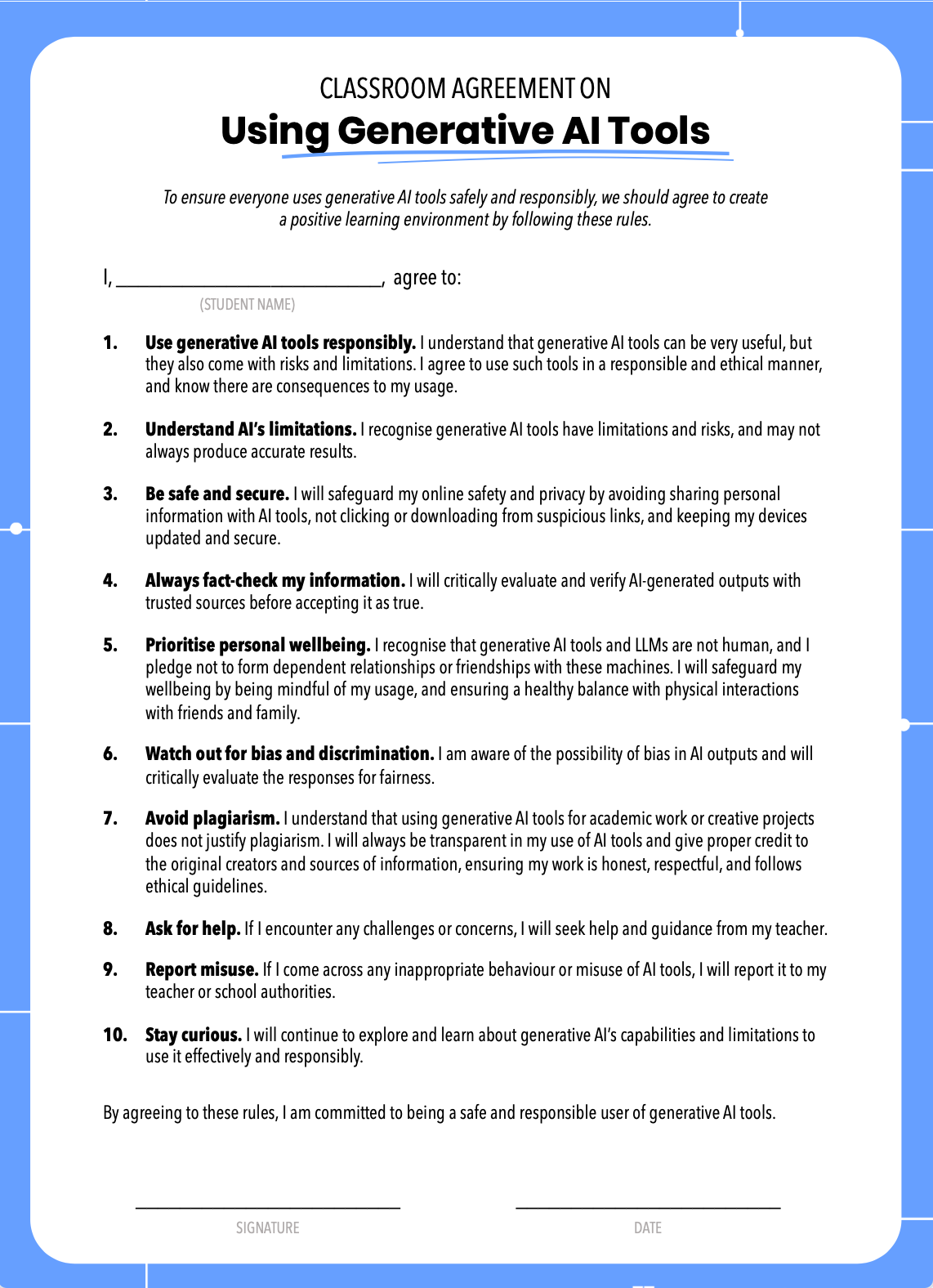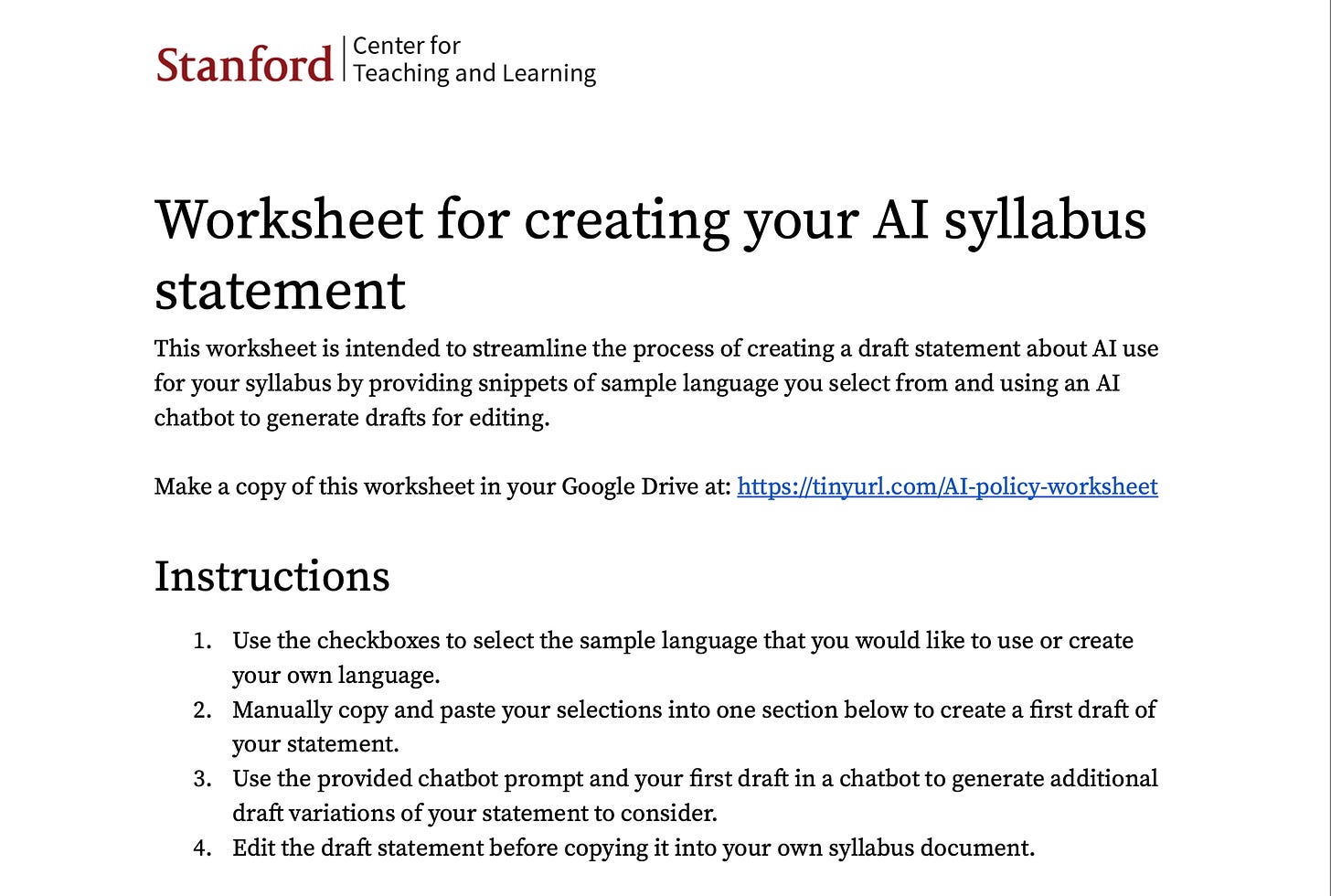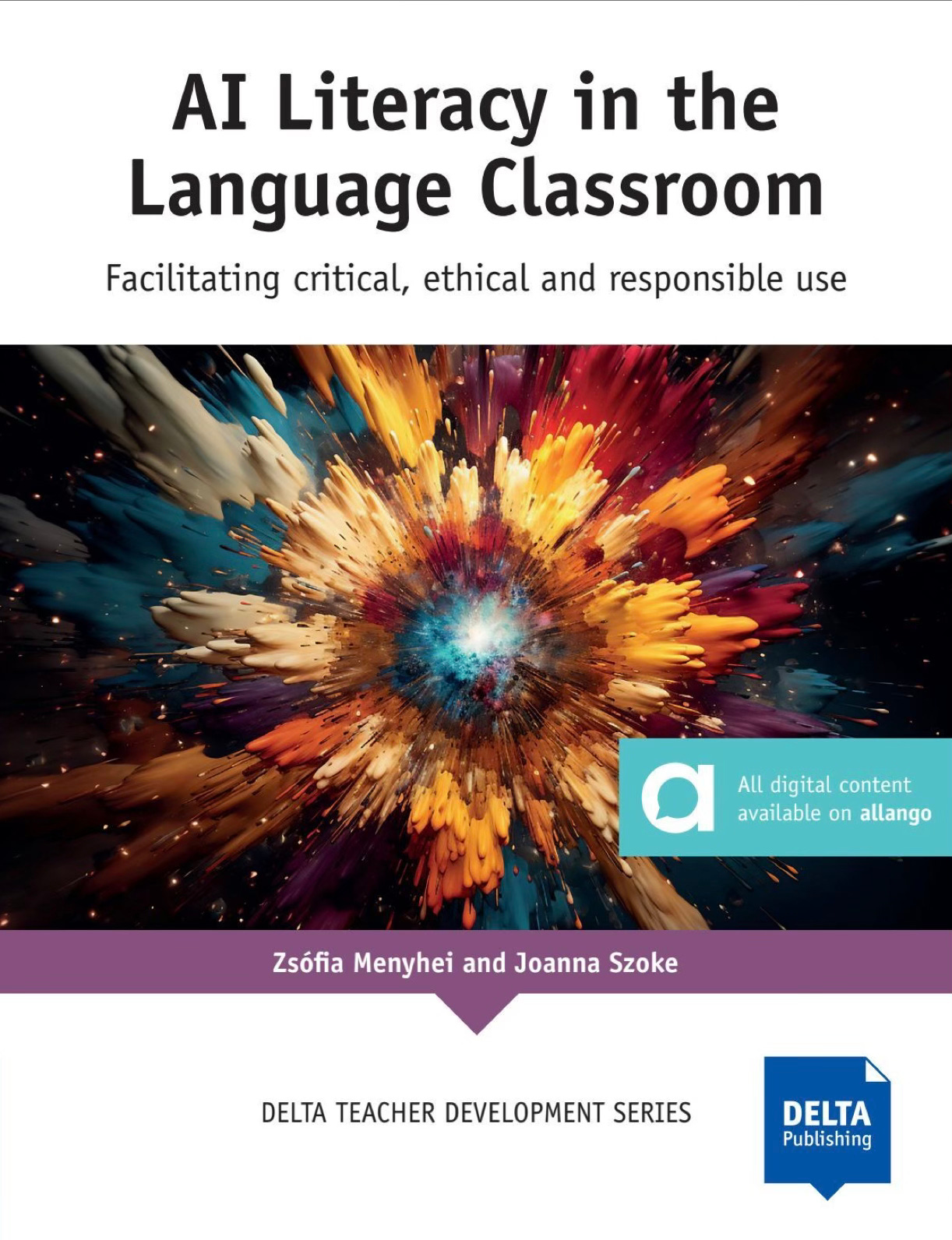[Activity insight] Drafting an AI policy for your class or school
Summer is sadly over and it's back-to-school time for most of the world. So it's time to consider co-creating an AI policy with your students or with your colleagues.
In this post, I’ll share a couple of top tips for putting together such a policy along with some great guides and templates that you can find online.
Why should I care about an AI policy?
Good question. A policy by itself won’t solve all your problems. It also won’t guarantee that your students throw their phones in the trash and start writing long essays with a smile on their faces.
What it can do, however, is lay down some clear(er) guidance and position your classroom or your school on the attitude spectrum toward using Generative AI in teaching and learning.
A lack of such a policy essentially signals to your students that there is no clear consensus (at least in your institution or classroom) regarding many crucial points of using GenAI, such as data protection, copyright, learner autonomy, the question of originality, and critical thinking. And this in turn means that teachers will take largely different routes (i.e., reckless freedom due to ignorance or carelessness vs. complete prohibition due to ignorance again or fear), which will probably negatively affect students during their studies.
What’s the point of co-creation?
Such a technology, which is complicated and murky even for those who seem to understand it, inevitably divides people (school administrators, teachers, students, and their parents), especially when on the surface they have different agendas.
A one-sided policy will only satisfy one of these groups and will leave the others disappointed and misrepresented. With a collaborative approach, everyone can see how the other side views the question. And that will hopefully help them come up with a code of conduct that satisfies all of them.
Two role-play activities from our book, AI Literacy in the Language Classroom, is perfect for laying the groundwork for such a discussion and collaborative brainstorming session:
Perspectives hot seat (p.97): this activity helps explore different stakeholders perspectives on using AI through role-play. Sit in the hot seat, facing the group, and act in your chose role. Answer questions from the group about your concerns or reasoning, ensuring you stay in character. As a group, reflect on the insights gained about each stakeholder’s perspective. Brainstorm ways to address relevant concerns arisen during the role-play.
Scenarios (p.97): this activity encourages you to role-play and analyze scenarios that may occur with students, parents and colleagues related to teaching for a literacy. Decide who will play the teacher, and who will take on the other role or roles. Ideally, other colleagues could observe and “pause” the scenario at critical moments to provide suggestions.
How to get started? Guiding questions
Take a look at this list of guiding questions (a combination of ones in existing guides and those of our own [taken from our attitude scale on p. 104 and the assessment flowchart on p.98 in the book]), and think through your position:
Do I want to limit students’ GenAI use? If yes, what exactly is my reason for doing so?
How am I going to ensure that students learn foundational skills and knowledge? (Remember that doing a full 180 on previously established work and study modes, i.e. going back to pen and paper in all cases will eventually demotivate and alienate students.)
If I accept the fact that students will use GenAI no matter what, how can I integrate that in their learning? What sort of human-AI collaborative work do I envision?
How is their GenAI use going to affect my assessment practices? How am I going to redesign existing assignments and how is it going to be communicated to students?
How do I want my students to acknowledge their use of AI?
How will I ensure that they use AI critically, ethically, and responsibly? Where can they turn for additional guidance?
What’s going to happen if I suspect that a student has used GenAI tools in their work? What can actually happen? And how much of this use is already too much?
How to get started? Existing AI policy guides
TeachAI
The absolute best and most comprehensive guide out there I believe is TeachAI’s AI Guidance for Schools Toolkit. It has everything that you could possibly need from understanding what AI is and demonstrating it to other stakeholders, through guiding questions with regard to all the previously mentioned difficult topics, to sample guidances and letters to parents.
They also follow a pro-AI literacy approach, meaning they are for using GenAI in a responsible, ethical, and purposeful way.
Attempting to enforce broad bans on AI is a futile effort that widens the digital divide between students with independent access to AI on personal devices and students dependent on school or community resources. Closing the digital divide in an age of AI still begins with internet connectivity, device availability, and digital literacy. (p.15)
I’ve collected their most useful links here:
Editable Google Doc with lots of guiding questions, a framework for incorporating AI into the education system, and lots of samples (guidance, letter to parents, letter to staff, student agreement)
AI in Education presentation: this AI in Education slide presentation provides key messages, latest statistics, and essential background on AI in education
Beautiful infographics about several topics, e.g. AI in the workforce, EU AI Act memo, and what is AI?
Microsoft
Another one I think is worth sharing is Microsoft’s Classroom Agreement template. They also offer a toolkit on unlocking generative AI safely and responsibly.
Stanford University
This page could be useful for teachers and professors who are aiming to put together their own policies. Even though it’s meant to be used by the educator only, you can still share it and discuss it together with student. They have even prepared a worksheet with sample lines and also sample prompts so that you can ask an AI chatbot to help you draft the policy.
Our book
We have also prepared an activity in our book that helps you collaboratively prepare an AI code of conduct. Look for this activity in Chapter 3, on p.61.
There are many more out there, let me know which ones you’d recommend!





